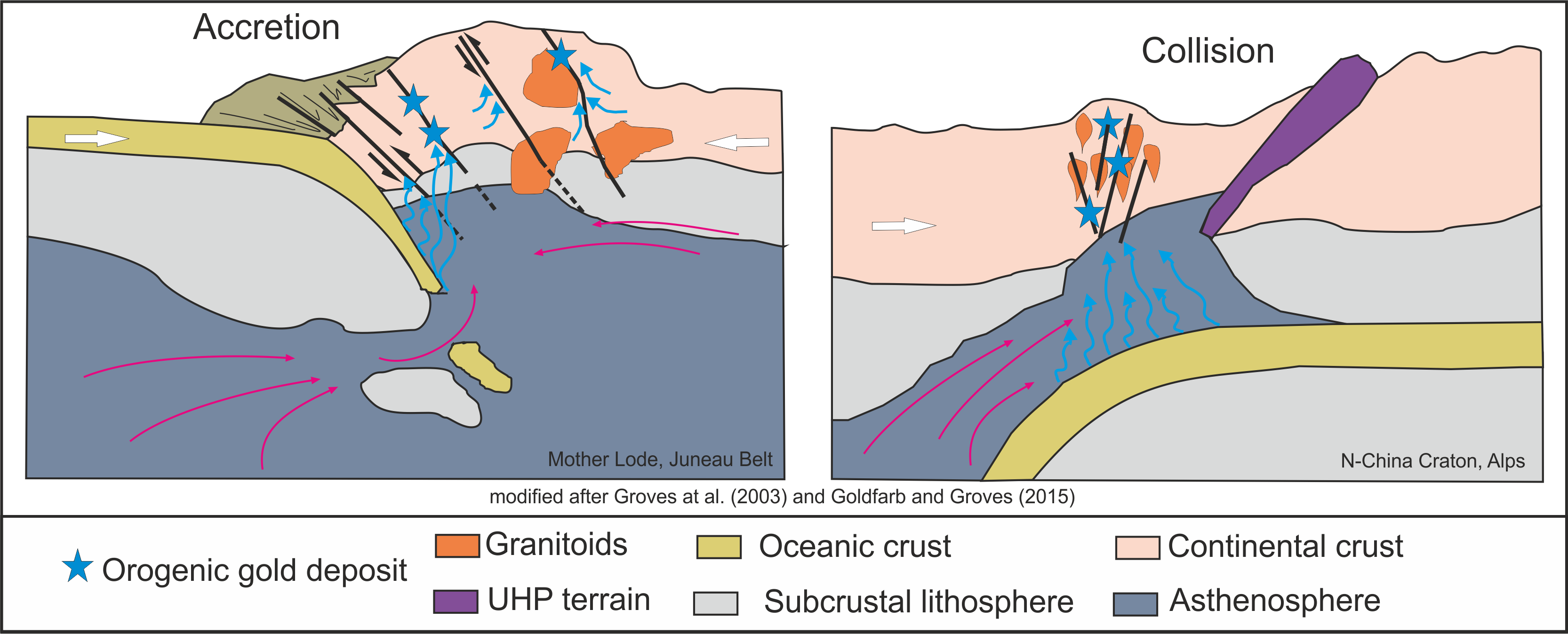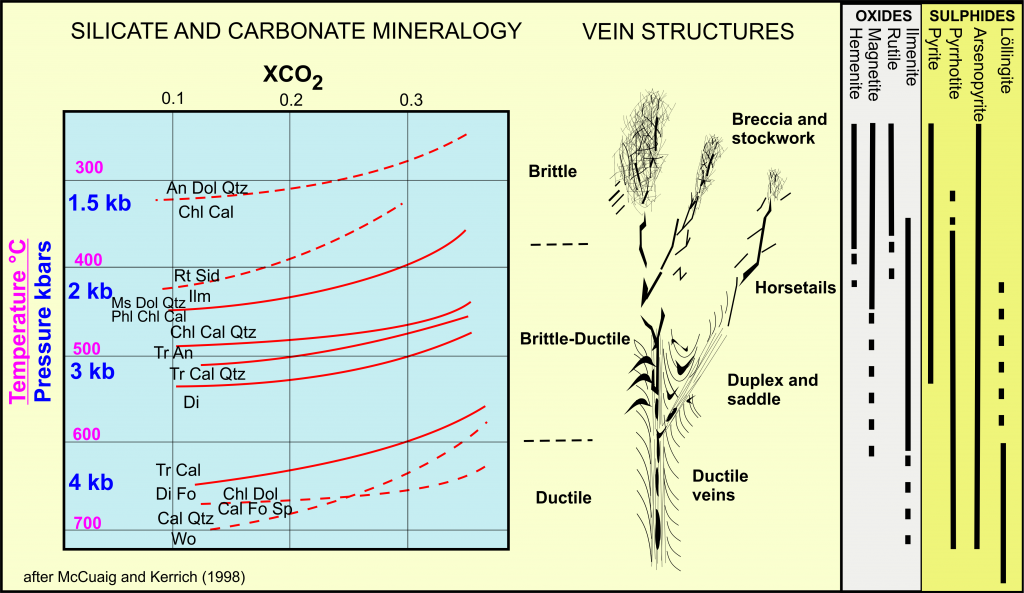Orogenic gold deposits are epigenetic-hydrothermal Au (± base metal) deposits which form in response to elevated heat and fluid fluxes during compressional to transpressional deformation in metamorphic belts of accretionary and collisional orogens. Uniform elements in orogenic gold mineral systems from Archean to Phanerozoic ages are as follows:
Crustal architecture: localization of deposits in orogenic belts, along/near boundaries of terranes/tectonic units.
Geochronology: syn- to post-peak metamorphic and late deformation timing of ore formation.
Conduits: structures controlling fluid flow are crustal scale shear zones and related second/third order fault systems. Deposits are located at shallow to mid-crustal levels, most typically in greenschist and amphibolite facies metamorphic rocks, in the zones of brittle/ductile and brittle deformation with fault controlled pressure fluctuation.
Traps, footprints, vectors: precipitation of gold most commonly triggered by phase separation processes in the parent fluids along the fault networks between rocks with contrasting competencies due to transient change in the tectonic stress field and sulphidation/carbonatization of host rocks during fluid-rock interaction. The ore forming fluids have a wide range of temperatures (250-700°C), aqueous carbonic composition with low to moderate salinities, and reduced, near-neutral chemistry.
Preservation and modification: Archean and Proterozoic orogenic gold deposits along craton margins could be subjected to overprint by superimposing orogenies and local upgrading/re-mobilization of gold ore.
Devolatilization of volcanic and sedimentary rocks during metamorphism or the sediment laden oceanic slab during subduction supports generation of large volume fluids of crustal/sub-crustal origin. Migration of these fluids along crustal-scale fault systems mobilize and transport the ore forming elements. This model does not exclude addition of fluids from other local sources along the pathways of the regional scale fluid flow. Local admixing of fluids of different origin to the regional scale fluid flow system may explain the observed variation in metal associations and stable/radiogenic isotope properties among deposits occurring in the same orogenic belt and province.


